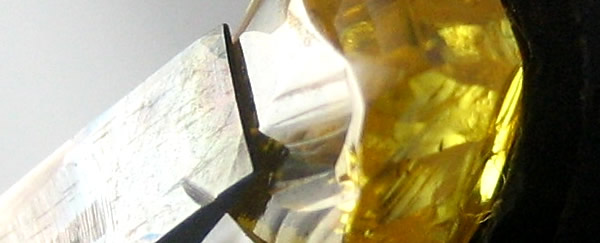Dan Roam, author of the visual mapping books The Back of the Napkin: Solving Problems and Selling Ideas With Pictures and Blah, Blah, Blah: What To Do When Words Don’t Work, compares the process of visual thinking to carving a faceted diamond out of a rough piece of the crystalline substance. This is a very powerful analogy.
In their natural state, diamonds do not look like the beautiful, multi-faceted gemstones that are one of the world’s most valuable substances. Instead, they look like a lump of crystal. In much the same way, raw information must be carved and shaped to create something of meaning and value. Most people don’t know how to do this.
It takes an experienced diamond cutter to carve the stone and reveal the beautiful facets of the diamond. In much the same way, a visual thinker dissects a large pile of information, classifies it, organizes it and converts it into a cohesive visual presentation out of it that is thrilling to behold. Visual thinkers need to be skilled at systems-level thinking, able to recognize patterns and connections within the bits of information they have gathered, and a keen eye for separating valuable elements from the useless bits.
In both diamond cutting and visual thinking the primary process is one of simplification, cutting away that which is not of value and maximizing the presentation of the parts that remain Like a diamond, information has multiple facets; in a mind map, these are reflected as primary topics, each containing a depth of subtopics, much like the reflections and refractions within a fine diamond.
The final point of comparison between diamonds and visual mapping can be found in the worth of the raw material versus the finished product. Coal has little value. It’s basically carbon formed into a shale-like substance. But compressed under the proper heat and pressure conditions for millions of years and then chiseled and shaped by an experienced diamond cutter, it is transformed into something of incomparable value. In the same way, a visual mapper takes a pile of information and knowledge and transforms it into something of much greater value – a business decision, a plan or a multi-million dollar idea.
That’s the power and value of visual thinking.


Leave a Reply